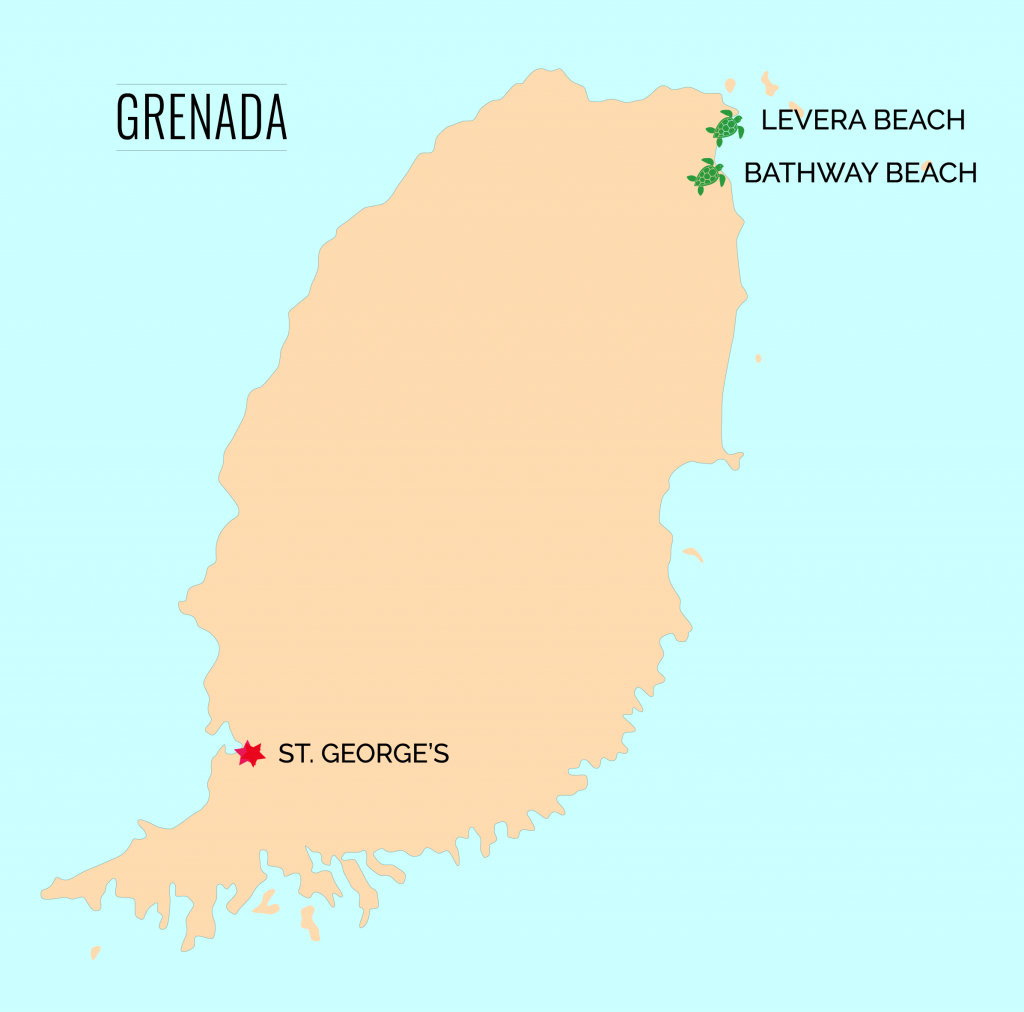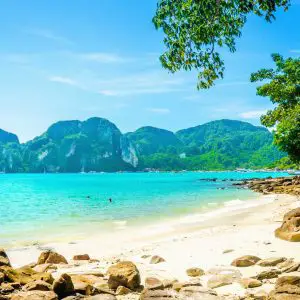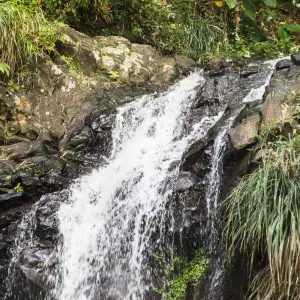Leatherback turtles are the largest species of sea turtle and can be found on the shores of Grenada. These creatures are now endangered due to various factors, and there is a big focus on preventing their extinction.
If you want to see these large sea turtles for yourself, tours are conducted in Grenada to observe these animals in their natural environment. Given the situation, there are strict guidelines and regulations in place to ensure that tourism doesn’t cause further damage and that the species remains protected.
This article will address everything you need to know about leatherback sea turtles and tours in Grenada, including:
- When and where the leatherback sea turtle tours are offered in Grenada?
- What you can expect during a leatherback sea turtle tour
- Why leatherback sea turtles are endangered?
- What’s being done to save leatherback sea turtles
- Facts about leatherback turtles (history, how they lay eggs)
leatherback sea turtle tours in Grenada
The leatherback sea turtles can be found on Levera Beach, and this is where tours are conducted. Levera Beach is located in St Patrick’s Parish, but most tours will begin at Bathway Beach.

Levera Beach is a picturesque setting found on the northeast coast of Grenada. The road leading to the beach is bumpy and unsealed, requiring a four-wheel drive to get down it.
The beach has been named a national park in Grenada, given that it is the site of the endangered leatherback turtle and also home to waterfowls.
Check SPECTO’s website to get current hours fees and to book a sea turtle tour.
When are the leatherback sea turtle tours offered?
Leatherback sea turtle tours in Grenada operate during the nesting season, which begins in March and ends in July.
Marine biologists monitor the activities and nesting behaviors of the turtles to make sure they are well protected. This also helps to ensure tourists get value from the tour and can see these animals.
What You can Expect During a leatherback sea turtle tour
Tours begin with an information session at the Turtle Centre to prepare and educate tourists before taking them to Levera Beach.
The Turtle Centre is located on Bathway Beach. The presentation usually begins at 7:30 p.m., with the actual turtle tour being conducted on the beach between 8:00 p.m. and midnight.
During the hatching season, there is a 75% chance or greater of seeing a leatherback sea turtle before midnight. These odds are increased by the marine biologists who monitor their behavior and can indicate where the tours should go.
Participants will be taken from the Turtle Centre to Levera Beach to watch the turtles. The length of the tour will depend on participants and how long they want to stay out, although nobody is allowed to stay longer than midnight. Participants will then be transported back to the Turtle Centre.
A guide will accompany your group for the entire time. Most tour providers only offer group tours and will cap the numbers for each session, although in peak times, there may be more than one group at the site.
Guides are a vital aspect of the conservation program. They educate tourists about preserving these turtles and their habitat while ensuring visitors act in ways that don’t disrupt the turtles. The Division of Fisheries Ministry of Agriculture has made it mandatory for all groups to have an educated guide.
The actual tour may involve up to a mile of walking, so it is recommended that visitors dress appropriately. Comfortable, enclosed shoes are recommended, as you will need to walk down and along the beach to reach the nesting turtles.
It is common for debris and various items to be washed up on the beach, and guides will point these out throughout the tour to ensure nobody gets injured. Tourists should also be aware that the weather can change suddenly, and rain can come quickly.
Wearing full-length pants and a shirt, plus bringing a warmer waterproof layer, will ensure that you are prepared for everything.
During the tour, all participants are expected to act within the stated guidelines. These include no flash photography, no torches or lights, no handling of eggs or turtles, and no pets of any kind.
Why are leatherback sea turtles endangered?
Sea turtles are currently facing several challenges, which is why their species are being threatened. These challenges include the following five hazards:
Pollution
Plastic and general trash are impacting the oceans and killing sea turtles that ingest them. Chemical pollution is also affecting the quality of water, degrading the habitat of these turtles and making it harder for them to survive.
Fisheries
Some turtles are getting caught in nets and trawls, and this is resulting in their death. Fishing also impacts their habitat by changing the food chain and ecosystem.
Coastal development
Turtle habitats are being destroyed through development. Beaches are being changed or taken over by buildings, preventing turtles from being able to nest. The development is also changing the seafloor.
Climate change
While climate change increases the occurrence of natural disasters, it also increases the destruction of the habitat of leatherback sea turtles. It impacts the water and also the beaches upon which they nest.
Humans
Some people are directly killing turtles by hunting them or stealing their eggs for food. Turtles are also killed to create products such as leather and oil.
What’s being done to save leatherback sea turtles in Grenada?
Grenada is taking the protection of the leatherback sea turtles seriously. In 2010, a ‘Closed Beach Policy’ was implemented. This means that the Levera Beach is closed at night during hatching season.
In addition to this, SPECTO is implementing practices to protect the turtles. SPECTO (St. Patrick’s Environmental and Community Tourism Organisation) is the national advocate for the conservation of leatherback sea turtles in Grenada. They educate communities and visitors on the turtles, the challenges they face, and how to protect them.
SPECTO also monitors turtle behavior at Levera Beach and leads eco-friendly tours that respect the turtles. There are strict guidelines in place for these tours, and numbers are capped to ensure tourism does not damage the habitat and have a detrimental impact on the leatherback sea turtles.
Facts about leatherback turtles
- Female leatherback sea turtles return to the beach to lay eggs between 3 and 6 times each nesting season.
- The gender of a baby turtle is determined by the temperature of the sand within which it is laid rather than during conception. Females are developed in the middle of an egg pile where it is warmest.
- Only one in every 1000 baby turtles will reach adulthood and come back to the beach to lay eggs of their own.
Summary
To recap, here are the key points I hope you take away from this article:
- Leatherback sea turtle tours are offered at Levera Beach in Grenada. This is where the turtles come to lay their eggs.
- Tours operate during the nesting season. This runs between March and July.
- Leatherback sea turtle tours are educational and operate under strict guidelines. Groups will be taken onto the beach by an educated guide and will be able to observe the turtles from a safe area.
- Leatherback sea turtles are an endangered species. They face a range of hazards, including pollution, fishing, and climate change.
- Grenada has initiatives in place to protect the leatherback sea turtle and prevent them from becoming extinct. This includes a closed beach policy to protect the turtles during nesting season and an advocacy group that educates communities and visitors.
Make the most of your day in St. Patrick Parish.
Check out other interesting things to do in St. Patrick Parish in my article Get Off Your Beach Chair and Explore Grenada’s Amazing Parishes.





